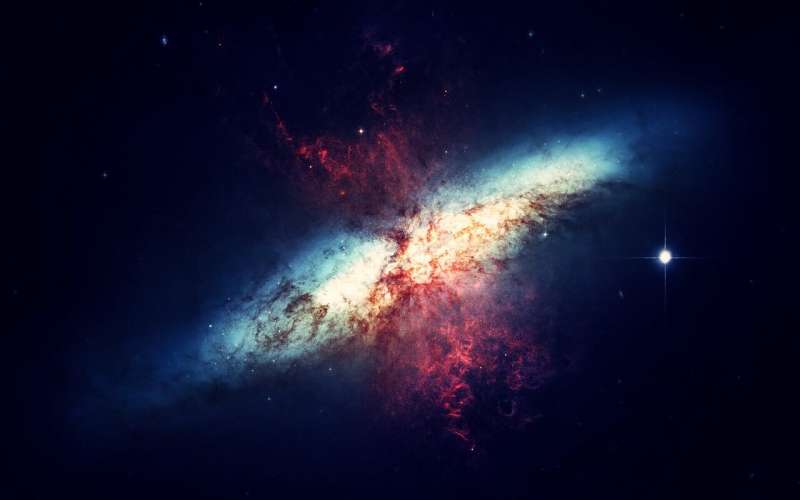High-mass stars are formed not from dust disk but from debris

A Dutch-led team of astronomers has discovered that high-mass stars are formed differently from their smaller siblings. Whereas small stars are often surrounded by an orderly disk of dust and matter, the supply of matter to large stars is a chaotic mess. The researchers used the Atacama Large Millimeter/submillimeter Array (ALMA) telescope for their observations, and recently published their findings in the Astrophysical Journal.
It is well known how small, young stars are created. They accrete matter from a disk of gas and dust in a relatively orderly fashion. Astronomers have already seen many of these disks of dust around young, low-mass stars but never around young, high-mass stars. This raised the question of whether large stars come into existence in the same way as small ones.
Large stars are formed in a different way
"Our findings now provide convincing evidence to show that the answer is "No'", according to Ciriaco Goddi, affiliated with the ALMA expertise center Allegro at Leiden University and with Radboud University in Nijmegen.
Goddi led a team that studied three young, high-mass stars in star-forming region W51, roughly 17,000 light years from Earth. The researchers were looking in particular for large, stable disks expelling jets of matter perpendicular to the surface of the disk. Such disks should be visible with the high resolution ALMA telescopes.
Not stable disks but chaos
Goddi: "But instead of stable disks, we discovered that the accretion zone of young, high-mass stars looks like a chaotic mess."
The observation showed strands of gas coming at the young, high-mass stars from all directions. In addition, the researchers saw jets which indicate that there may be small disks, invisible to the telescope. Also, it would appear that some hundred years ago the disk around one of three stars studied rotated. In short: chaos.
Matter from multiple directions
The researchers concluded that these young, high-mass stars, in their early years at least, are formed by matter coming from multiple directions and at an irregular speed. This is different for small stars, where there is a stable influx of matter. The astronomers suspect that that multiple supply of matter is probably the reason that no large, stable disks can be created.
"Such an unstructured influx model had previously been proposed, on the basis of computer simulations. We now have the first observational evidence to support the model," says Goddi.
More information: C. Goddi et al. Multidirectional Mass Accretion and Collimated Outflows on Scales of 100–2000 au in Early Stages of High-mass Protostars, The Astrophysical Journal (2020). DOI: 10.3847/1538-4357/abc88e
C. Goddi et al. Multidirectional Mass Accretion and Collimated Outflows on Scales of 100–2000 au in Early Stages of High-mass Protostars, arxiv arxiv.org/abs/1805.05364 arXiv:1805.05364v2 [astro-ph.GA]
Journal information: Astrophysical Journal , arXiv
Provided by Leiden University




















